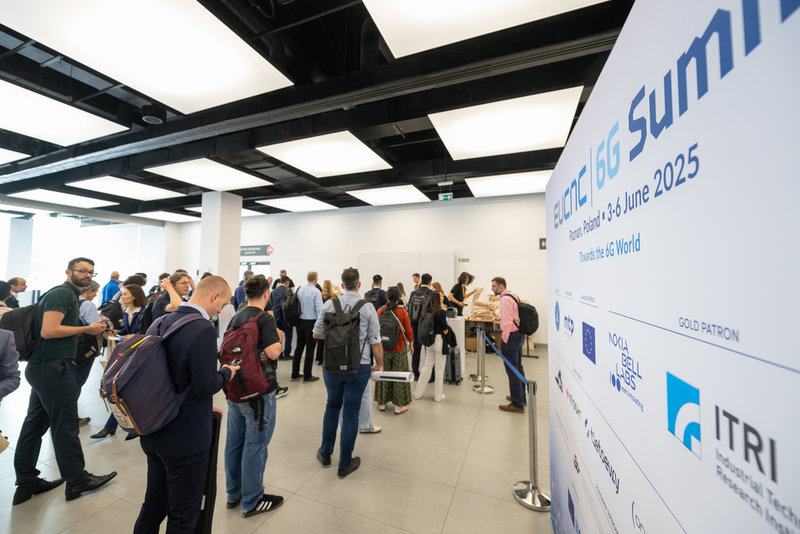This year’s edition of the EuCNC & 6G Summit, held in Poznań, Poland from 3–6 June 2025, proved to be a vibrant platform for showcasing the latest research and innovation in telecommunications. Among the participants was the ETHER project, which had a varied and dynamic presence throughout the conference with a live demo on vertical handovers, a joint workshop on TN-NTN unification, a technical poster on flexible payloads, and a novel satellite orchestration solution presented in the Satellite Communications track.
Live Demo: 6G Beyond Limits – Vertical Handovers in Integrated TN-NTN Networks
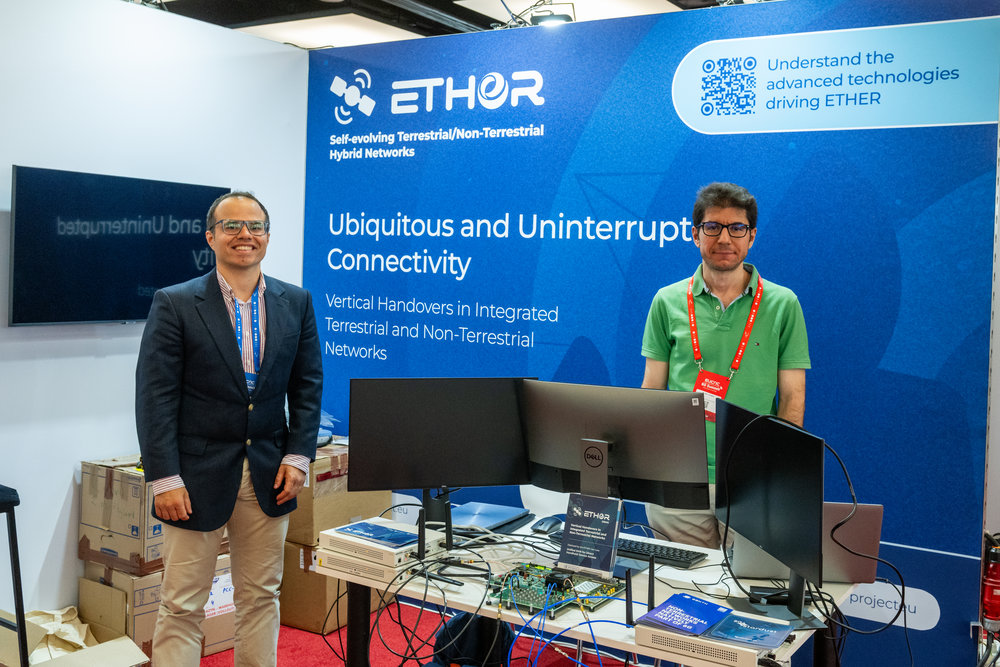
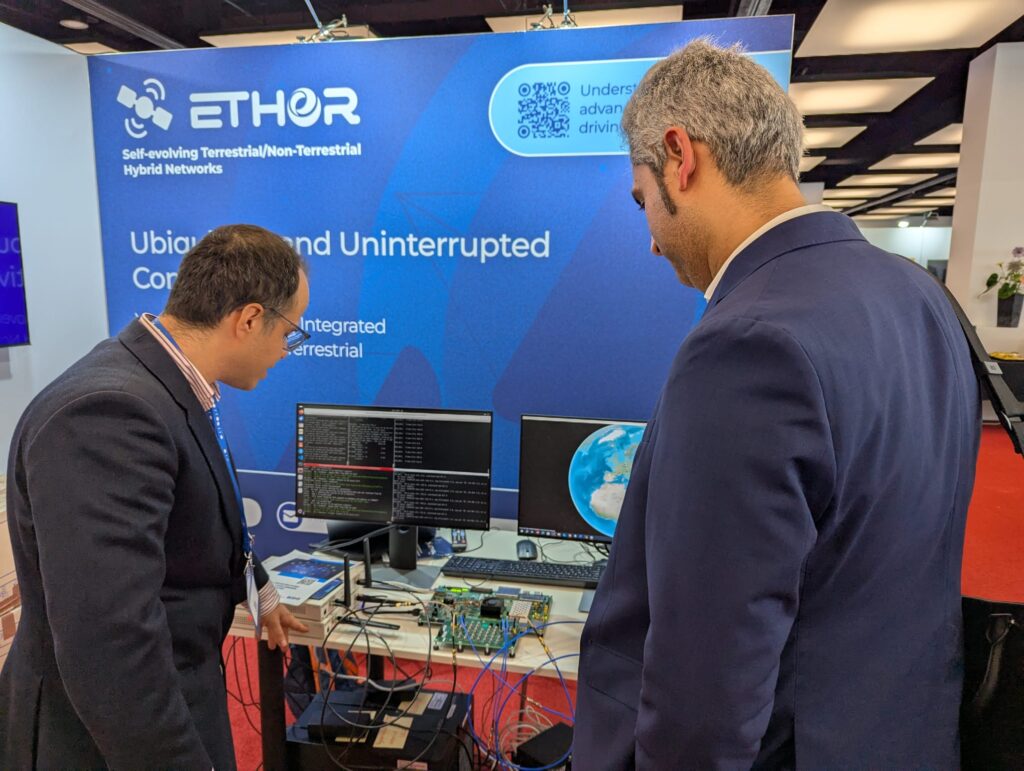
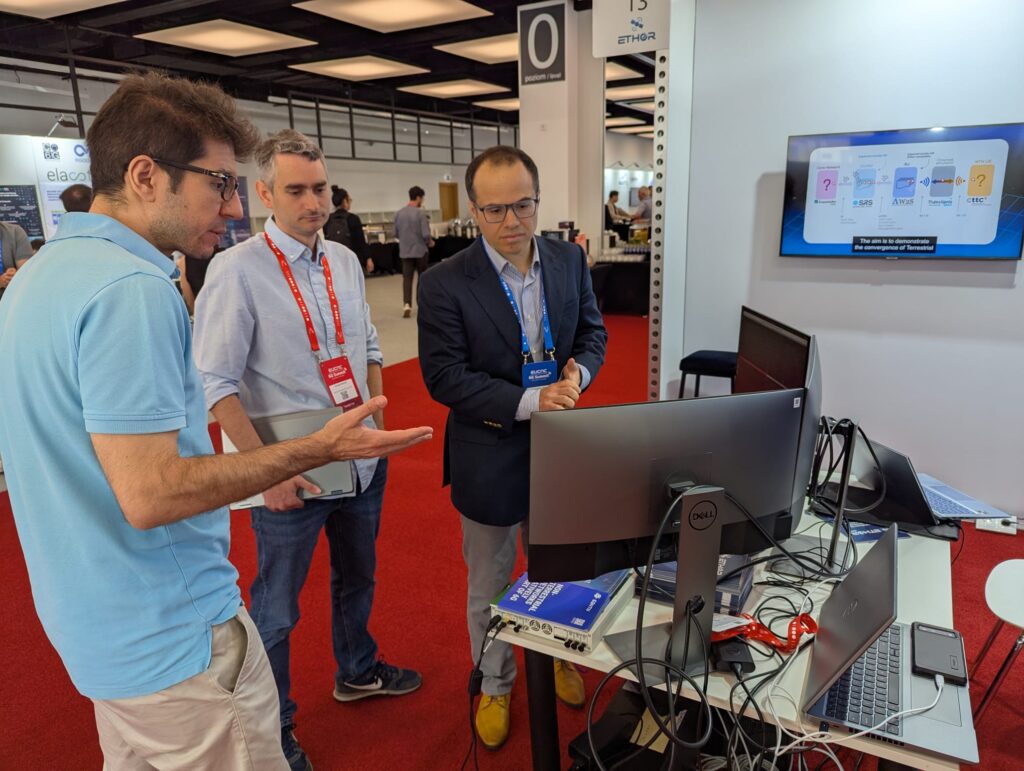

Vertical Handovers in Integrated Terrestrial and Non-Terrestrial Networks
One of ETHER’s major highlights was its live demo, “6G Beyond Limits: Vertical Handovers in Integrated Terrestrial and Non-Terrestrial Networks”. The demo, a major outcome of ETHER’s second use case on unified RAN for direct handheld device access, was shown live by Konstantinos Ntontin and Turker Yilmaz, both from the University of Luxembourg. It showcased a standards-compliant vertical handover procedure between a terrestrial 5G gNB-DU and a LEO satellite-based gNB-DU using a unified 3GPP interface. It was built using OpenAirInterface for the RAN software stack and included a hardware-in-the-loop setup enhanced by an FPGA-based channel emulator, which simulated realistic LEO satellite conditions such as high Doppler and varying link quality.
Key capabilities demonstrated included:
- Real-time session continuity during vertical handover
- Dynamic selection and coordination of radio access nodes via a central gNB-CU
- Support for direct-to-device communication without requiring a satellite phone
- End-to-end orchestration facilitated by an ETHER-developed testbed integrating terrestrial and non-terrestrial components
The setup illustrated not only the feasibility of vertical handovers but also the viability of a 3D unified RAN capable of adapting to mobility, latency, and coverage challenges across heterogeneous environments.
The conference booth also featured insightful information about sister SNS JU projects 6G-NTN and 5G-STARDUST.
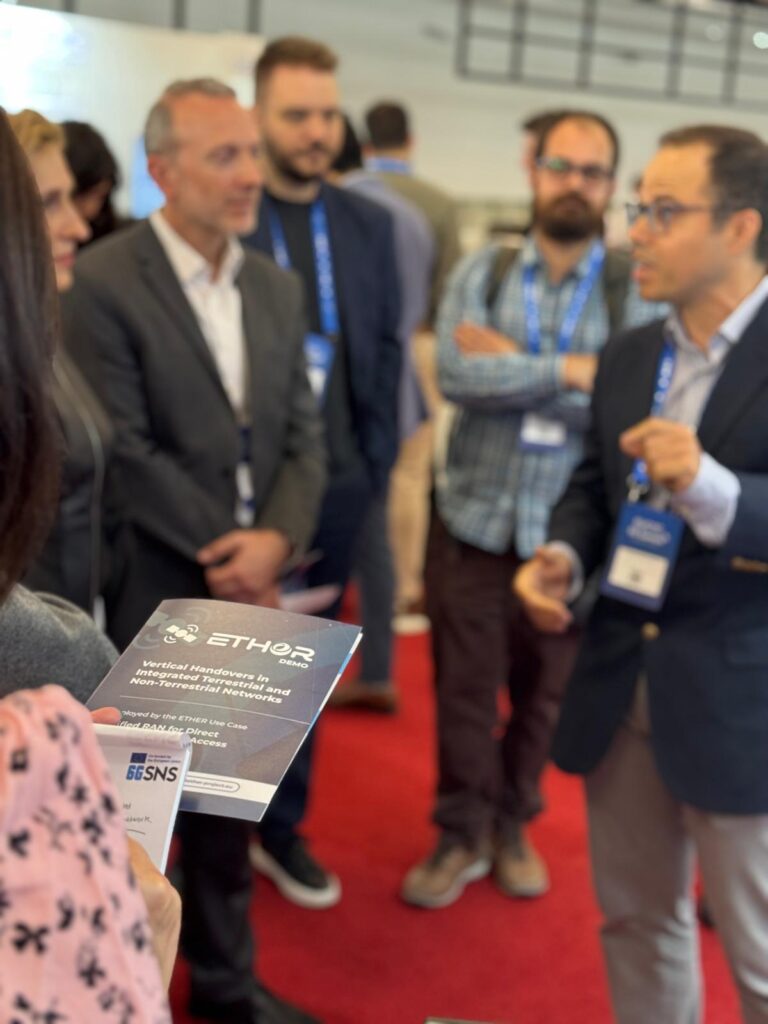
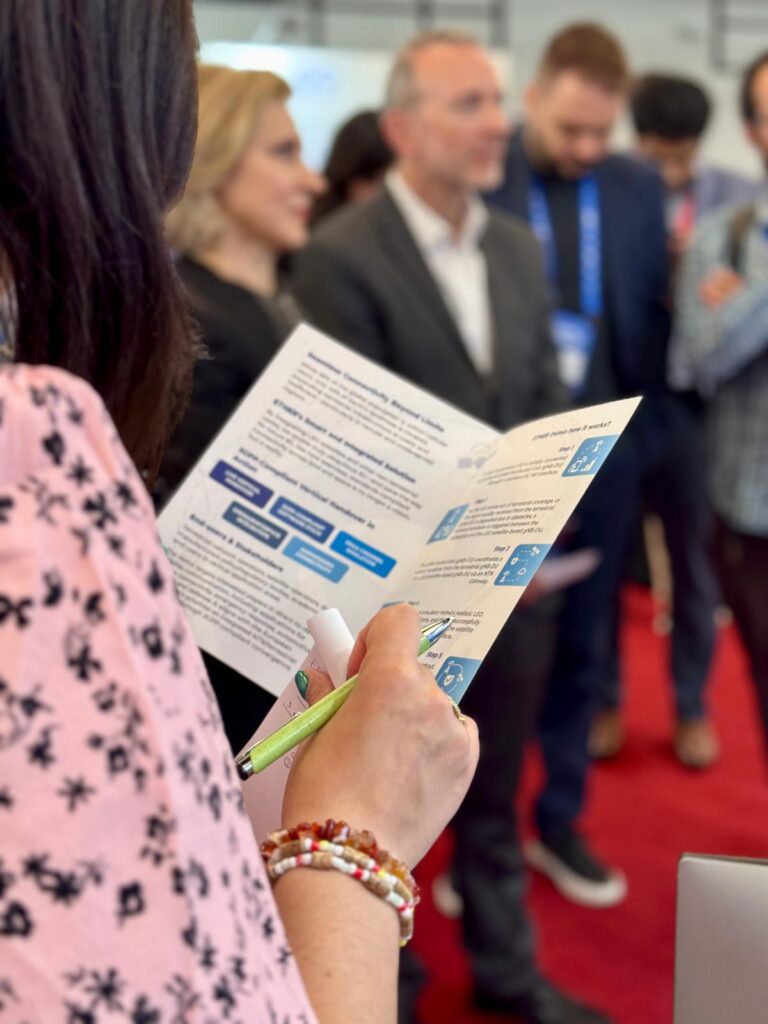
To further amplify the demonstration at the event, Ntontin also delivered a live pitch on 4 June 2025, on Vertical Handovers in Integrated Terrestrial and Non-Terrestrial Networks, explaining the demo’s significance in greater detail.
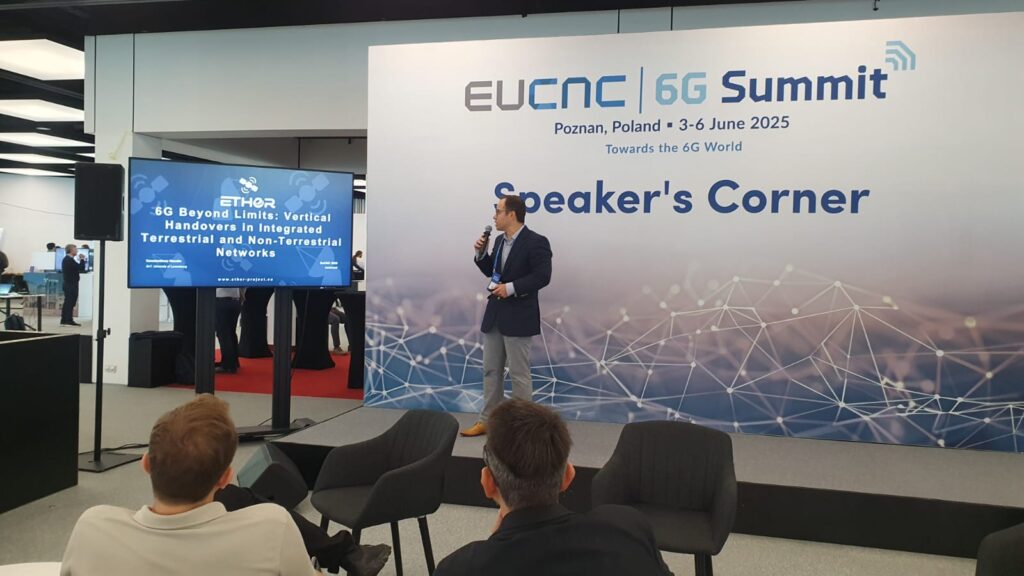
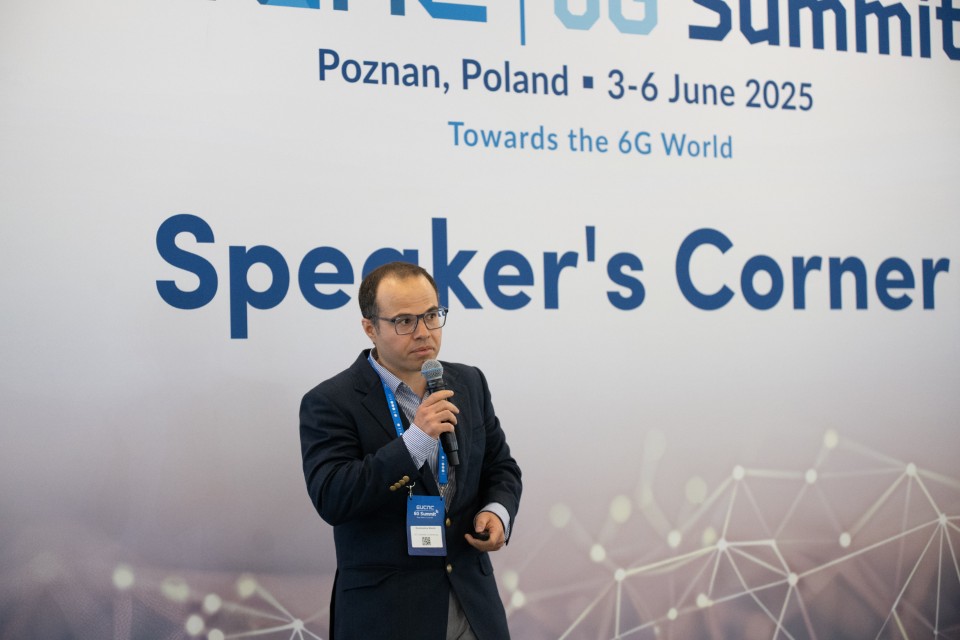
Visit from the SNS JU Team
A major moment for the project came with the visit of executive members from the Smart Networks and Services Joint Undertaking (SNS JU) Programme Office. The ETHER team was honoured to welcome Executive Director Erzsébet Fitori, Deputy Head of Programme Pavlos Fournogerakis, and Programme Officers Chiara Mazzone and Cristina Cullell-March. Their engagement underlines the strategic importance of ETHER’s work and the alignment of its goals with Europe’s broader 6G vision. Their presence at the booth signalled strong support for ETHER’s efforts to tackle digital exclusion through non-terrestrial network integration.
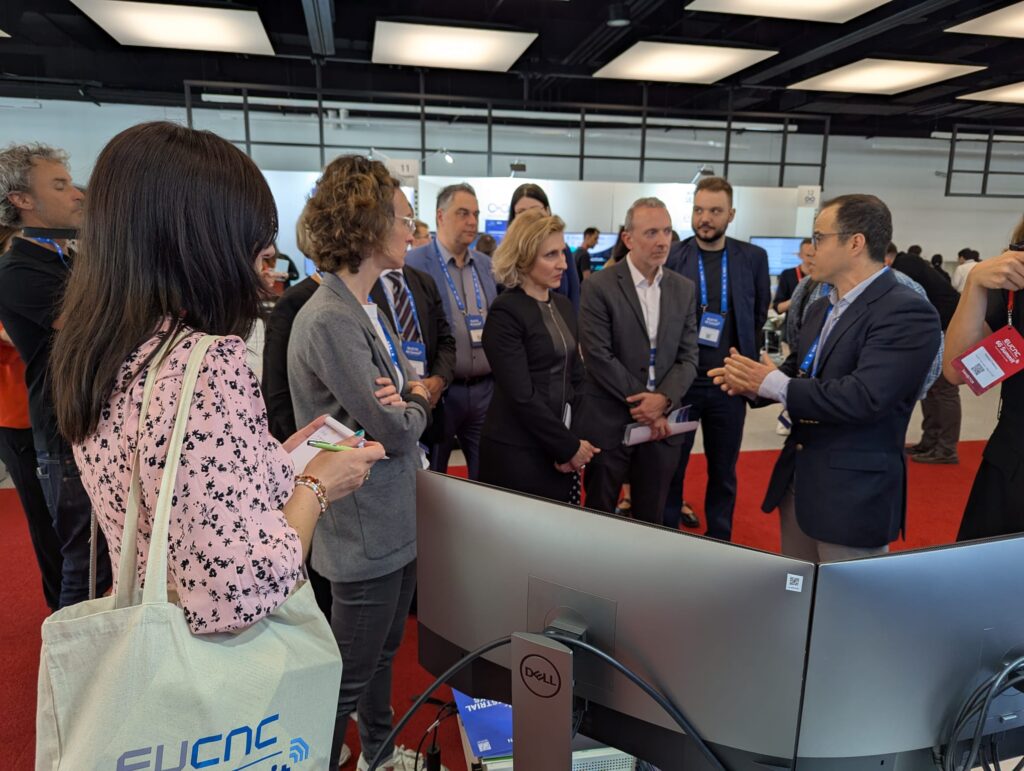


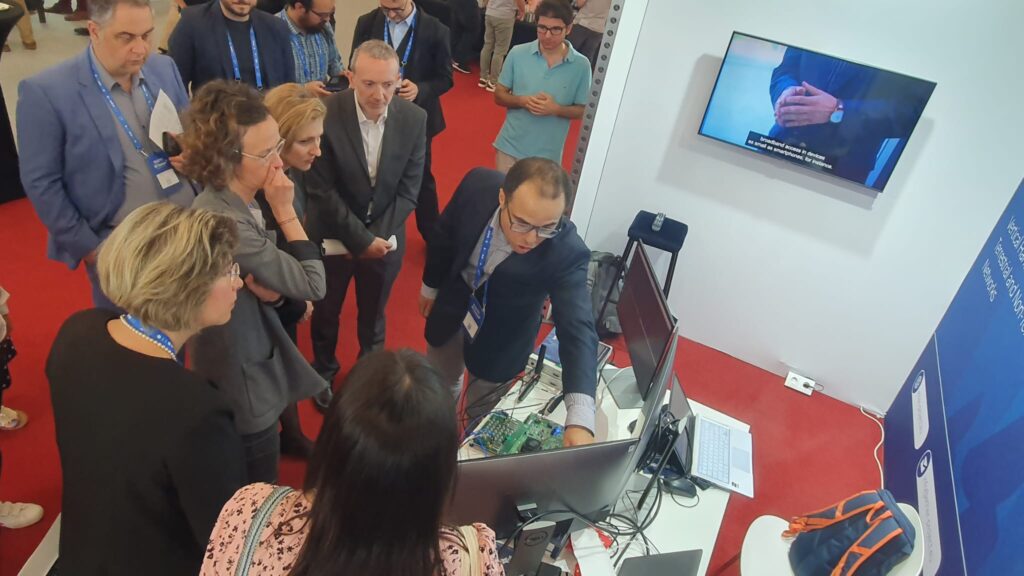
Workshop Contribution: Unifying TN and NTN for 6G
In addition to the demo and exhibition, ETHER made a strong contribution to the joint workshop titled “Terrestrial and Non-Terrestrial Networks Unification Towards 6G“, held on 3 June 2025. The workshop was co-organised among multiple SNS and ESA projects, including ETHER, 6G-NTN, 5G-STARDUST, Hexa-X-II, NexaSphere, and others.
The workshop highlighted the increasing strategic relevance of integrating non-terrestrial networks (NTNs) into 6G infrastructures—an area gaining global momentum through initiatives such as Starlink and national research programs in Korea and Japan. In Europe, the European Commission’s multibillion-euro IRIS² programme was cited as a major driver of NTN advancement and technological sovereignty.
Dr. Ntontin presented ETHER’s lab demonstration activities in his talk “3 Lab Demonstration Activities Towards Our 3D Unified Network Vision”. The presentation delved into the project’s three core use cases:
- Service provision for delay-tolerant IoT
- Vertical handovers for direct-to-device handheld access
- Air-space safety critical operations
Particular focus was given to the vertical handover use case, for which a real hardware proof-of-concept was available at the ETHER booth, further reinforcing the project’s commitment to applied, standards-compliant research.
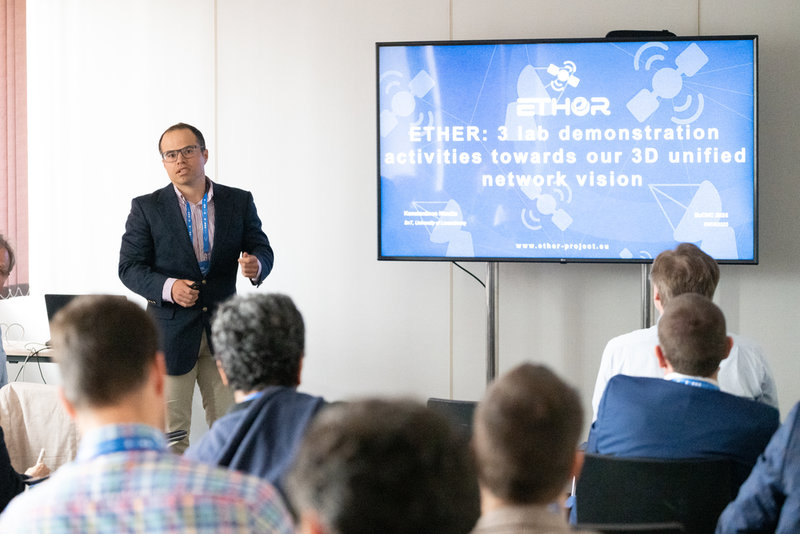

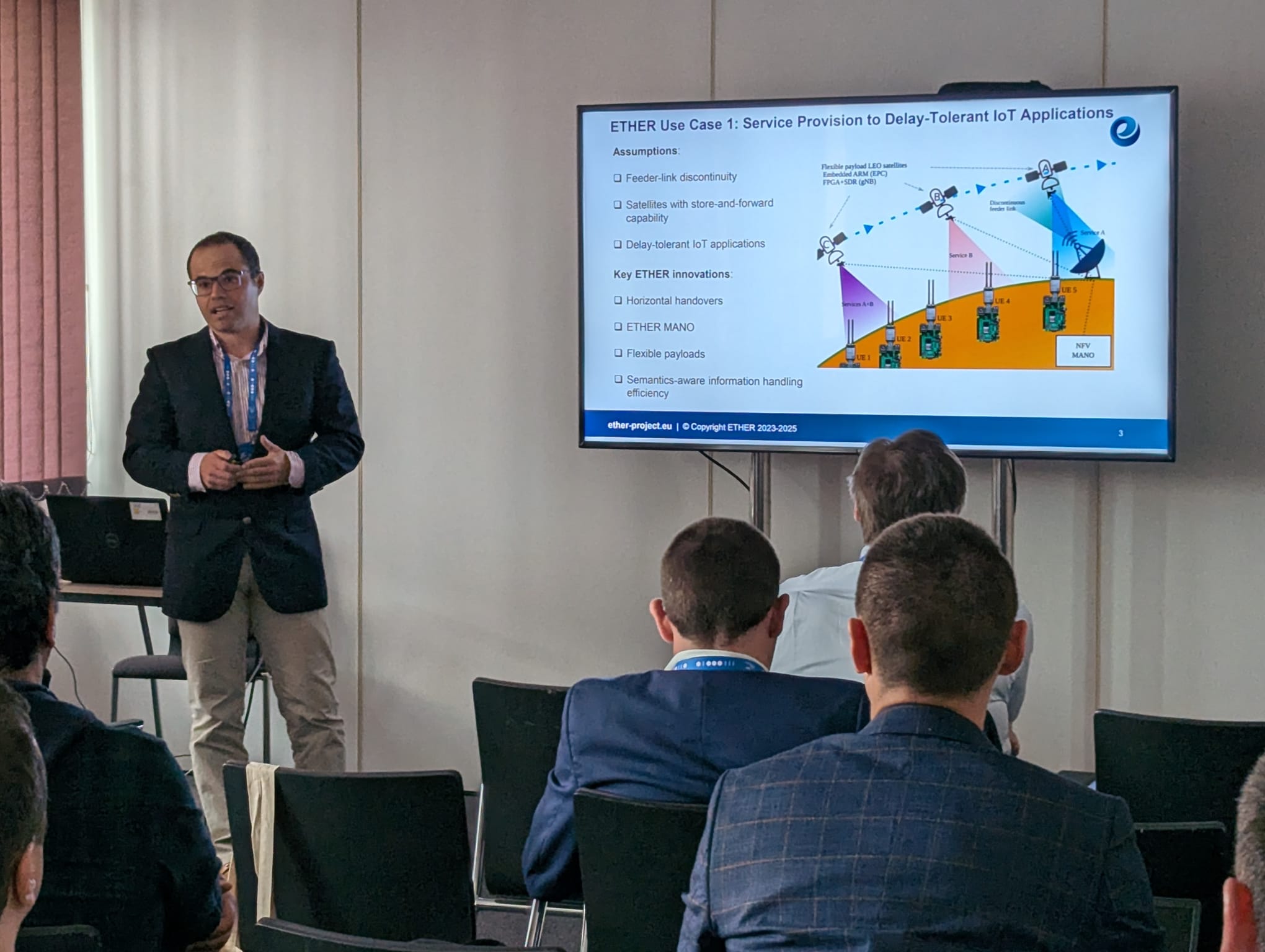
Track Session: Satellite Communications
On 4 June 2025, ETHER partners also contributed to the Satellite Communications track session, part of the broader “WOS – Wireless, Optical and Satellite Networks” Track. Hossein Rouzegar and Jose Avila Acosta (i2CAT Foundation), along with Anna Calveras Augé (UPC) and Joan Adrià Ruiz-de-Azua (i2CAT), presented their paper: “Spatially-Aware NFV Orchestration for Dynamic LEO Satellite Management in 6G Networks.”
This innovative work introduces a GIS-enhanced NFV MANO framework designed specifically for managing multi-LEO satellite constellations. By embedding Geographic Information Systems into the ETSI MANO architecture, the framework enables dynamic resource scaling, seamless handovers, and real-time service orchestration across moving satellite assets. Backed by Kubernetes orchestration and a Satellite Mobility Manager, the system demonstrated robust performance in a multi-satellite testbed, maintaining service continuity while optimizing power usage and resource allocation. These results position GIS-driven NFV orchestration as a promising approach to enabling efficient and scalable NTN operations in the 6G era.
Poster Session: Flexible Payload Technologies
ETHER was also represented during the conference’s poster session on 5 June 2025, with Hossein Rouzegar (i2CAT) presenting the poster detailing his paper on “Flexible Payload Technologies for Resilient Satellite Networks”. Co-authored with Victor Montilla Gispert, Alessandro Villegas, and Joan Adrià Ruiz-de-Azua (i2CAT Foundation, Spain), the poster addressed the high costs and technical limitations of current LEO satellite deployments.
The presented research proposed a flexible payload framework that leverages commercial off-the-shelf (COTS) components and introduces virtualization, hardware reconfiguration, and service orchestration. This approach enables in-flight service updates and platform-independent application deployment, ultimately enhancing both resource efficiency and the sustainability of satellite networks. Simulation results confirmed the framework’s ability to support multiple services while reducing power consumption, a key advantage in the context of energy-constrained space operations.
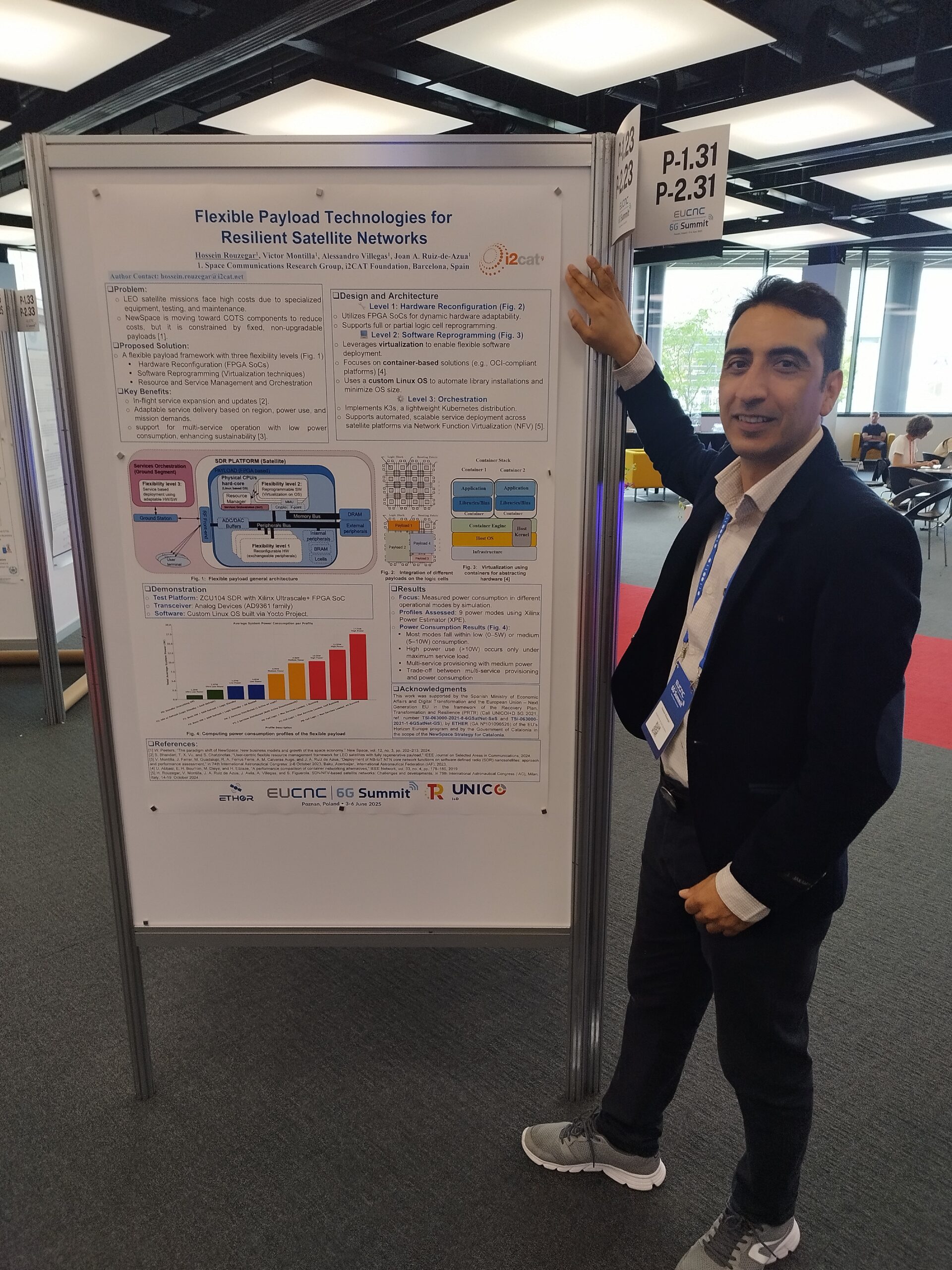
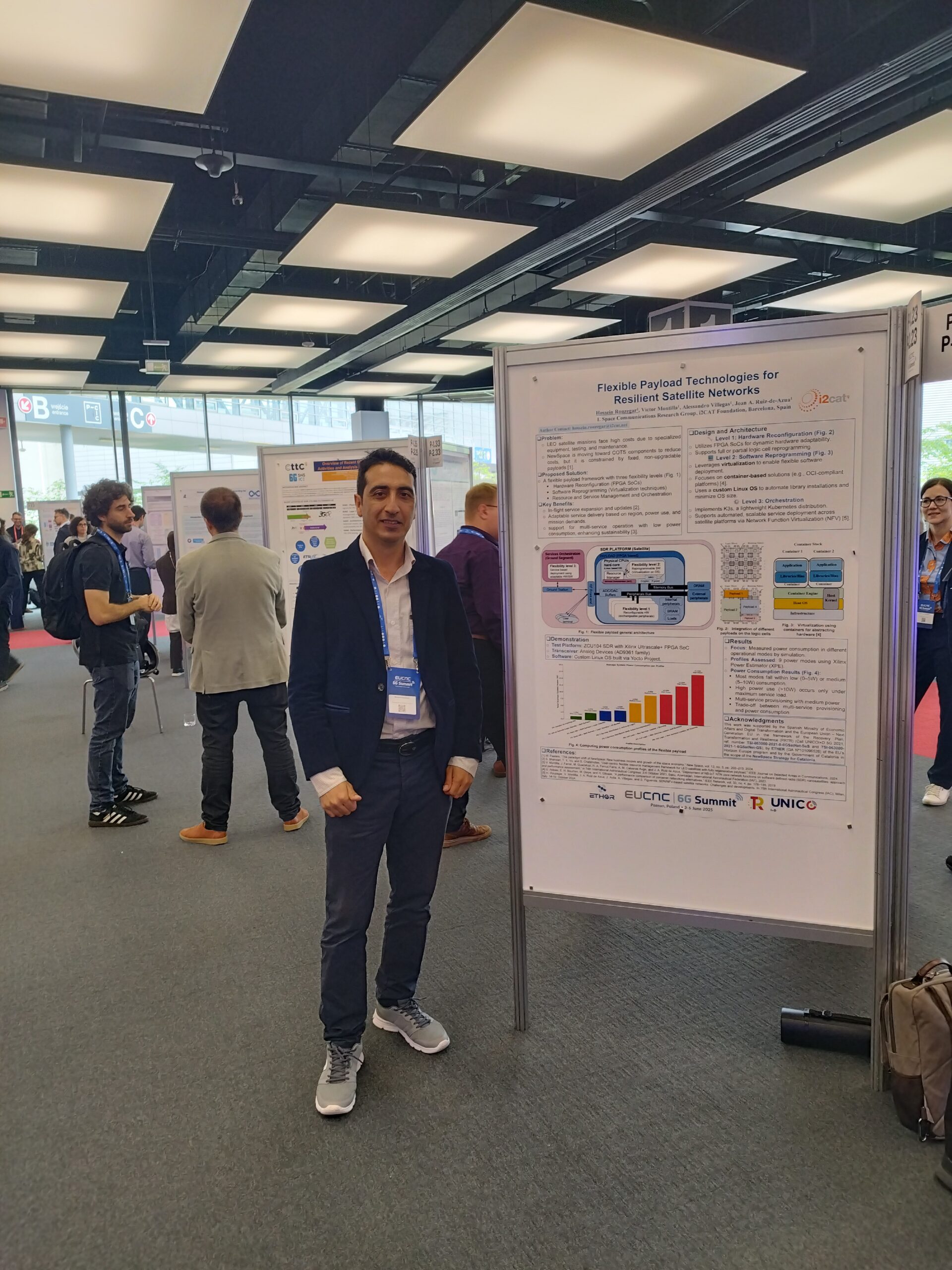
About EuCNC & 6G Summit 2025
The EuCNC & 6G Summit is one of Europe’s premier events in telecommunications research, bringing together key stakeholders from academia, industry, and EU-funded projects to explore innovations in 5G, 6G, and beyond. It features presentations, demos, and workshops on next-generation communication systems and technologies.
